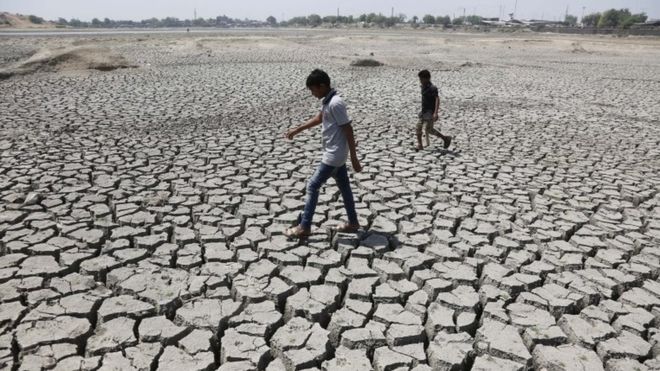India launches project to change the channels of the largest rivers

The Indian government has developed an ambitious plan to change the river beds in order to move water from the north and west of the country to the arid regions of the east and south. It is planned to change the channels of several large rivers, including the Ganges and the Brahmaputra, as well as to construct a system of canals connecting the Ken and Betva rivers, and in addition to them the Damanganga and Pingal rivers . Activists-ecologists express their protests, motivating them with the threat that the project carries for the ecology of the country.
Work on the Inter Linking of Rivers (ILR) plan, according to a representative of the Ministry of Water Resources, can begin from day to day - only a conclusion from the Ministry of Environment is expected. The project will cost about $ 3 billion and stretch over 30 years.
')
The project is the brainchild of Indian Prime Minister Narendra Damodardas Modi, who has repeatedly promised to solve the problem of water scarcity. He proposes to solve the problems of water scarcity in densely populated areas and the summer drought with the help of riverbeds transfer. Only in April of this year, 330 million people experienced hardships of varying degrees due to a prolonged drought.
India is one of the hottest countries on the planet. Recently, a temperature of +51 Celsius was recorded in the state of Rajasthan - the highest temperature over the entire observation period. And under the influence of global warming, temperatures will only grow .

The idea of changing the flow of rivers is not new, although Modi’s office did a great job of planning the project. Thoughts about the unification of the largest water arteries of India appeared in the XIX century, when the country was a colony of Great Britain: the south-eastern part of the country suffered from drought even then. The implementation of the plan proposed by the English engineer Arthur Cotton would enable the colonizers to export and import products faster.
Quite detailed plans were drawn up in the 1970s by the dam developer and irrigation minister Dr. KL Rao. At that time, several small projects for the partial transfer of water through canals were successfully completed in the country, and Rao proposed to launch a similar operation on a larger scale.
But not everyone likes this project. Dr. Lata Ananta [Latha Anantha] from the River Research Center claims he will have disastrous consequences for the country's ecology. “The government is trying to remake the entire geography of the country. What will happen to settlements, wildlife, farmers living in the lower reaches of the rivers? Rivers are not only a source of water, but also the basis of entire ecosystems. ”
The project is controversial, not only from the point of view of environmentalists. The Mullaperyar Dam, redirecting water from one Indian state to another, was built at the end of the 19th century and at that time seemed an engineering miracle - but interstate disputes over its control are still going on.
In addition, the project will affect not only the people of India. In neighboring Bangladesh, the lives of the Ganga and Brahmaputra depend on the lives of 100 million people, and the Minister of Water Resources of Bangladesh has already appealed to the Government of India to take their needs into account. The representative of the Ministry of Water Resources of India assures that the interests of the residents of the neighboring country will be taken into account.
Those born in the USSR will surely remember a similar epic project - the turn of Siberian rivers , which was widely discussed in 1960-1970. It was one of the most ambitious engineering and construction projects of the 20th century, the goal of which was to redirect part of the runoff of Siberian rivers (the Irtysh, Ob, Tobol, Ishim and others) to the regions of the country in dire need of fresh water.
At the same time, a grandiose construction of a system of canals and reservoirs was being prepared that would allow the transfer of water from the rivers of the northern part of the West Siberian Plain to the Aral Sea. Due to numerous critical publications of specialists, the project was frozen in 1986.
Source: https://habr.com/ru/post/394293/
All Articles